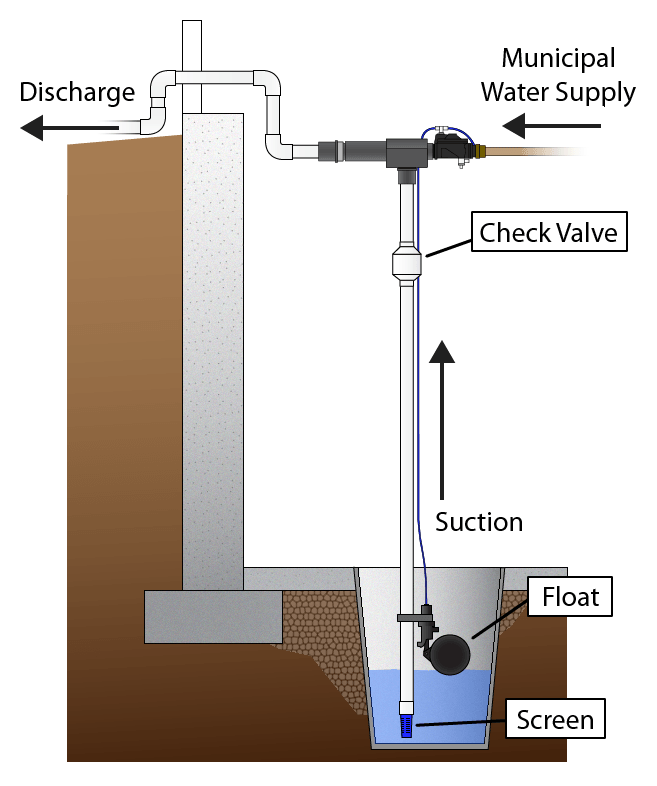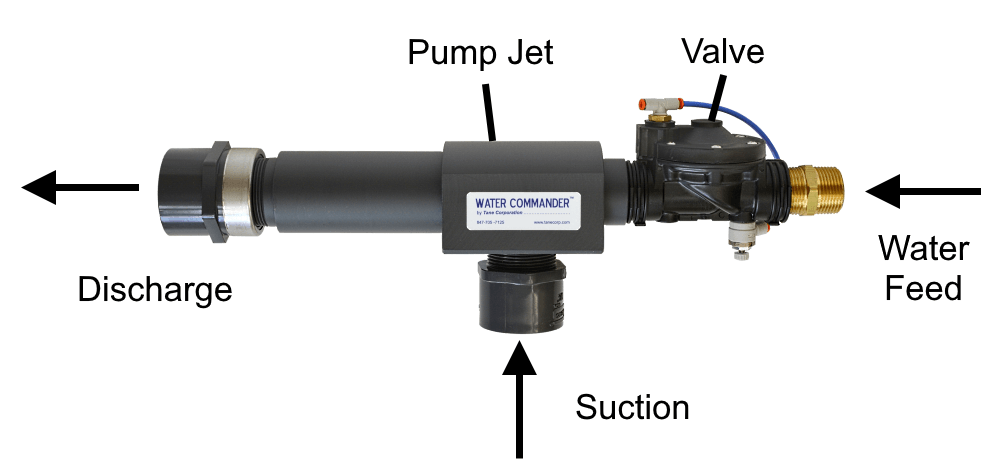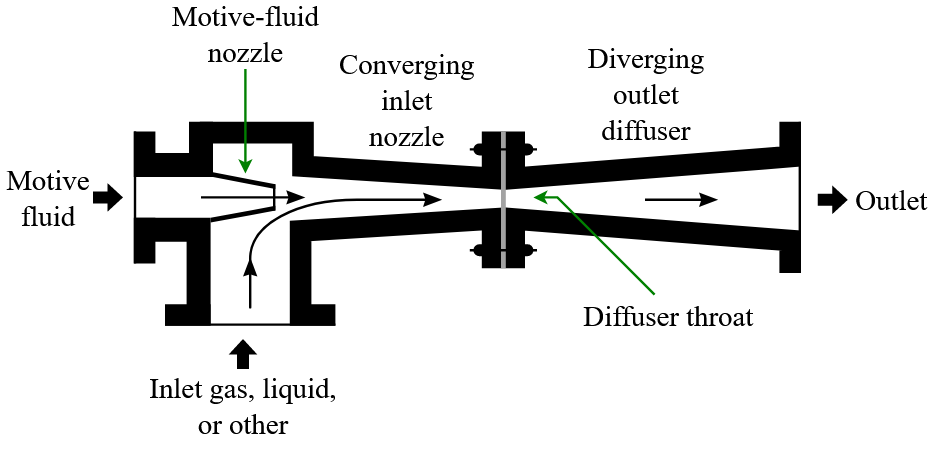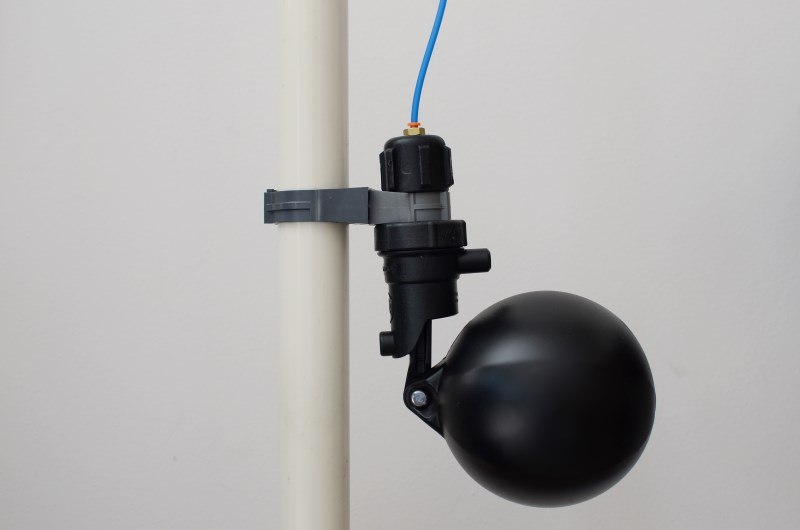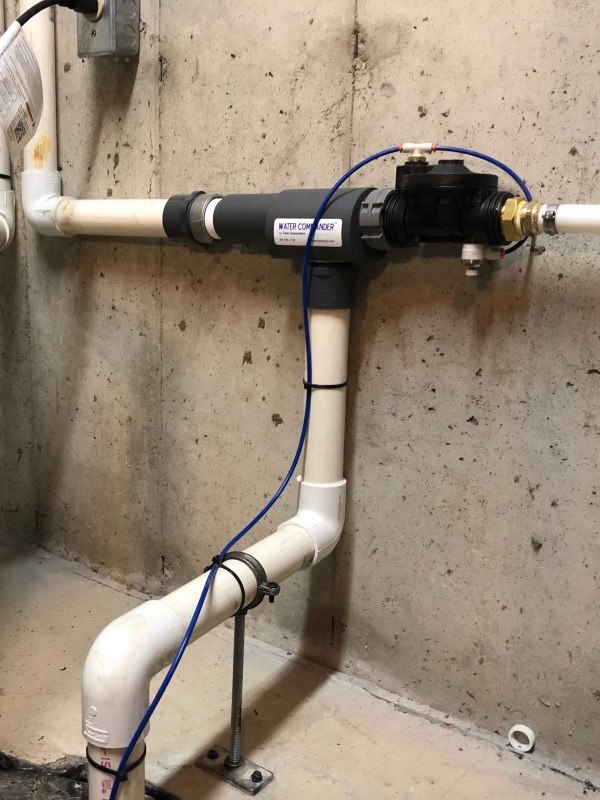Water-powered sump pumps work using municipal water pressure as their source of power, rather than electricity.
When people first hear about water-powered backup sump pumps, they immediately have questions about how exactly this type of pump operates. Does it really pump water? How does it work?
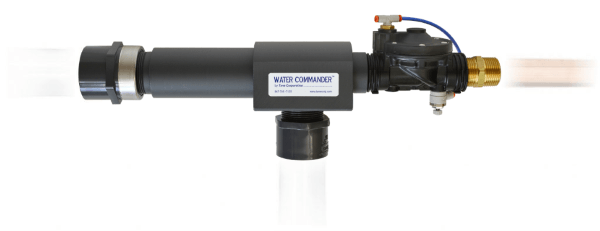
We’ve assembled this complete guide explaining everything you need to know on how water-powered sump pumps work, including basic installation setup and key parts of water-powered sump pumps, while also explaining the physics behind how it pumps. (Scroll to the bottom for our video, How Do Water-Powered Sump Pumps Work?)
Our guide is specific to Water Commander™, the water-powered backup sump pump that offers unmatched pumping power and professional quality you can depend on.
Basic Pump Installation Setup
A water-powered backup sump pump requires connection to your home’s municipal water supply (either 3/4″ or 1″ line), a suction pipe going into the sump, and a discharge pipe leading out of your home. On the water line, we recommend a quality backflow preventer. (We offer a standard dual check valve or dual check valve with atmospheric vent). On the suction pipe, an intake screen and PVC check valve are also required (both are included with Water Commander™). The check-valve prevents water from flowing back into the sump pit, but does not impede pumping.
In the sump pit, a float switch is attached to the suction pipe above the primary pump and is connected to the main pump valve by flexible tubing. Water Commander’s float assembly is very simple to install and requires no tools.
Water Commander™ water-powered sump pumps can be installed either high at the ceiling joist, to the wall, or even at floor level close to the sump itself. Unlike some pumps, Water Commander™ can be installed both horizontally or vertically. (See our install page for diagrams and photos).
Key Parts of Water-Powered Sump Pumps
On the water-powered sump pump itself, there are two main components: (1) the pump jet, and (2) the valve. Additionally, the pump has three connection points for the water feed, suction pipe, and discharge pipe.
When the float switch is activated, the valve automatically opens, allowing your municipal water to flow through the pump jet, pulling water up from the sump and then discharging the water outside your home.
Pump Jet
The most important part of a water-powered pump is the pump jet, also known as a jet ejector. This is what converts your home’s municipal water pressure into a strong suction, pumping water out of your sump pit.
The diagram to the right shows the basic design of a jet ejector, which is used in a number of different industries. In water-powered sump pumps, the motive fluid is the municipal water. This water flows through a nozzle, which restricts the flow and simultaneously increases the water pressure within the nozzle. This increased water pressure then converts into a high velocity as it leaves the nozzle. (The same effect occurs with a garden hose nozzle).
This high speed water in turn creates a low pressure zone within the internal chamber, causing a vacuum within the pump. This affect is explained in fluid dynamics as the Bernoulli principle, which simply demonstrates that higher fluid velocity creates lower pressure.
Once the vacuum is created in the pump by using pressurized municipal water, this creates a suction that pulls the sump water up through the suction pipe. As this sump water mixes with the municipal water, it is quickly pulled out through the discharge pipe. (Related article: How Much Water Does a Water-Powered Sump Pump Use?)
Valve
The valve, positioned in between the water feed and the pump jet, is connected by tubing to the float switch and is designed to turn the pump on and off automatically as needed. As water rises in the sump, the float rises, causing the valve to open. Once the water level in the sump decreases and disengages the float switch, the valve automatically closes, immediately stopping the pump from running.
Water Commander™ is designed to allow you to adjust the approximate run time every time the float is engaged. This allows you to run the pump longer or shorter depending on how much water in-flow you generally see in your sump.
Other Considerations
Since water-powered sump pumps derive their power completely from pressurized municipal water, there are two important points to keep in mind.
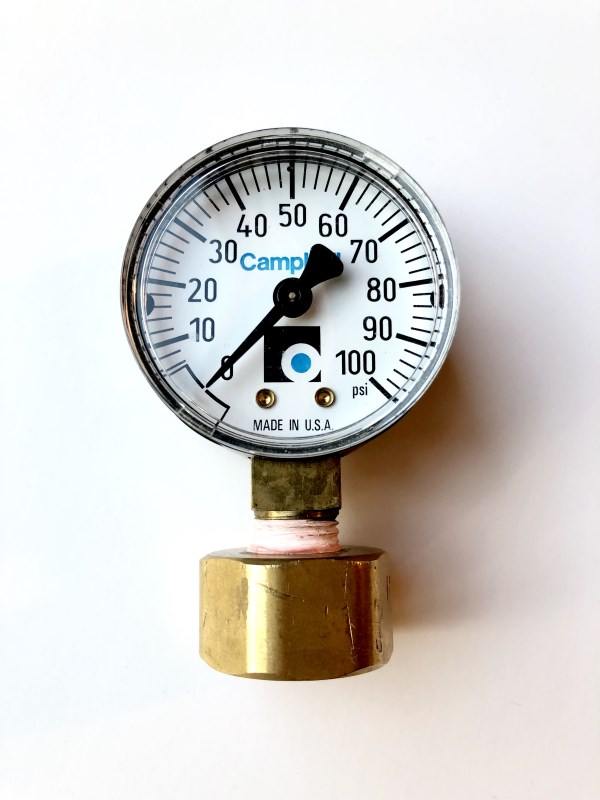
First, we generally recommend a minimum home water pressure of 40 PSI (pounds per square inch). It can run on less pressure, but you will see diminished pumping rates the lower pressure you have. You can check your water pressure yourself using a simple pressure gauge.
Secondly, water-powered backup pumps are not designed for homes on a well. If you own a home on a well, you will only have water pressure when you have power. Since water-powered sump pumps are primarily for emergency backup, they will not pump if you have no water pressure during a power outage.
Watch How It Works!
Summary
Water-powered backup sump pumps work only using your home’s municipal water. Since no electricity or batteries are used, it can be depended on to run whenever needed and as long as needed. It won’t suddenly die during a power outage or because of a dead battery.
There are no moving parts in the pump jet itself, which means it won’t break down over time. You can test the pump twice a year by simply lifting the float to make sure everything is in proper working order. It’s such a simple design, but one that can be depended upon and will last you for years to come.
Water Commander™ water-powered sump pumps are designed with the fastest pumping speed and built to the highest quality. You won’t find a backup pump that pumps as fast as Water Commander™ without ever losing power. Check out the rest of our website or contact us with any questions you might have.
Introducing Water Commander™
Water Commander™ is the best backup sump pump system available on the market today. It’s non-electric, can out-pump your electric sump pump, and will run at full power for years to come.
It is more reliable than battery backups and is the perfect solution for homes with municipal water.
Pumping Demo
Check out below a live pumping demonstration of Water Commander™ Model MG36.
Related Posts
- How To Measure Your Home’s Water Pressure
- Why Is My Sump Pump Not Working?
- How to Prevent Basement Flooding
- Battery Backup Sump Pump Troubleshooting Guide
- My Battery Backup Sump Pump Alarm Won’t Stop Beeping (Fixes)
Categories
Tag Cloud
Alarm Backup Sump Pump Batteries Basement Flooding Beeping Bernoulli Principle Best Sump Pump Check Valves Crawlspace Discharge Pipes Drain Tiles Ejector Jet Float Assembly Independent Discharge Municipal Water Perforated Sump Pits Power Outages Primary Sump Pump Failure Pros and Cons Pumping Charts Pumping Efficiency Pumping Rates Pump Life Span Pump Run Time Pump Testing Radon Gas Suction Pipe Sump Basin Sump Pump Motor Sump Pump Switch Troubleshooting Ultimate Guide Venturi Effect Water Drainage Systems Water Pressure Water Pressure Gauge Water Usage
